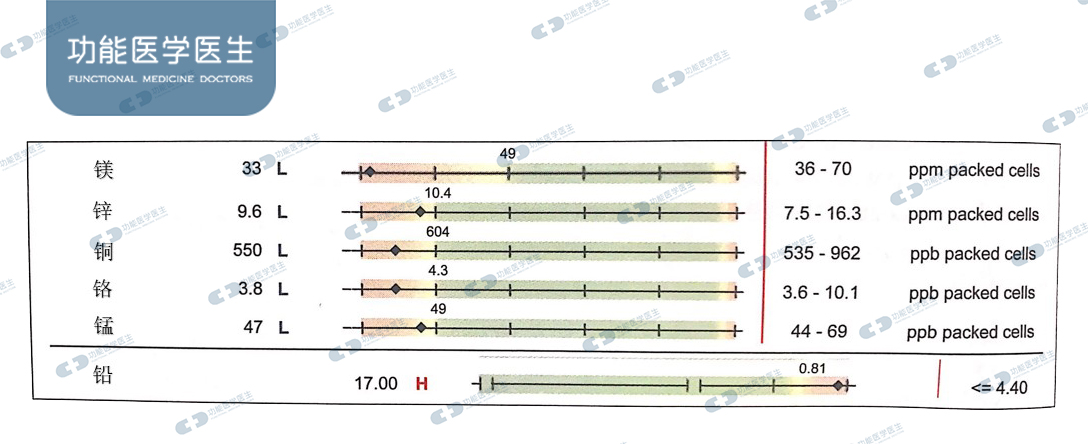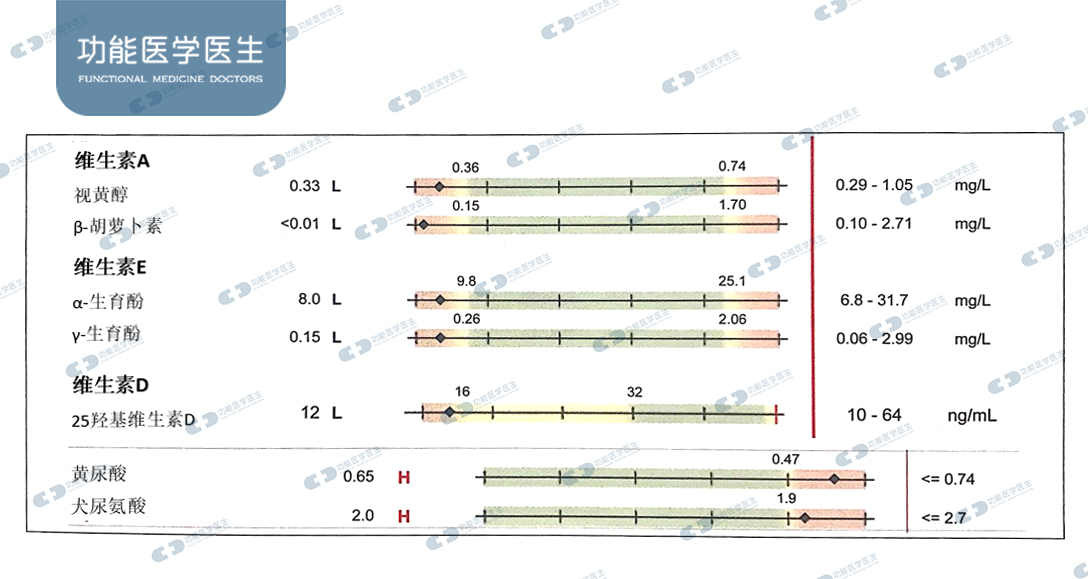编者按 儿童健康是值得社会全面关注的一个重要话题,自四月份以来,本平台陆续推出了功能医学干预自闭症的前置因素,以及由台湾苏圣杰博士专业分享的功能医学助力儿童健康成长的系列文章,反响强烈,本期继续围绕儿童健康成长中的一个常见疾病“注意缺陷多动障碍,又称儿童多动症(ADHD)”展开,通过美国医生Kara Fitzgerald, ND, Mark Hyman, MD实际案例患儿PJ的功能医学评估及后续干预结果对此病症进行分析,分为上下两期,敬请关注!
Attention Deficit Hyperactivity Disorder (ADHD) is considered a neurobehavioral developmental disorder involving attention regulation and hyperactivity. ADHD is the most prevalent behavioral disorder in children. It occurs at a rate of up to 18% in school-age children, and the incidence might be even higher: in privately insured children, it was, at 28%, the number-one pediatric diagnosis. Symptoms of childhood ADHD persist into adulthood at rate of up to 66%.Stimulant medications, including methylphenidate and amphetamines'-the most common drug classes used in treatingADHD-carry sign}cant risks that include, in particular, growth retardation, seizures and cardiovascular events. Not surprisingly, ADHD is a serious public health concern that results in an annual cost to society(as estimated in 2005)of 52 billion U.B. dollars. 注意缺陷多动障碍(ADHD)是神经发育障碍的一种,主要表现为注意力不集中和行为多动。ADHD是一种比较常见的儿童行为异常问题,其在小学生中的发病率较高,约为18%左右,有数据证明私立学校的小学生拥有更高的发病率,约为28%左右,占儿科疾病的第一位。儿童多动症的症状有66%的概率会一直持续到成年。刺激性药物例如用来治疗ADHD的利他灵和安非他明,常常会对患童产生较大的副作用,特别是会让患童出现生长缓慢、癫痫和心血管疾病的症状。从ADHD年均花费社会将近520亿美元的数据中(该数据统计于2005年美国)不难看出,ADHD已经成为一个严峻的社会焦点问题。 案例分析 Medical history PJ presented at age 12 with significant attention deficit hyperactivity disorder (ADHD), dysgraphia, environmental allergies, asthma, insomnia, eczema, canker sores, migraine headaches, muscle cramps, stomach pain, nausea, and diarrhea. He was first diagnosed with ADHD at age 5. He repeated kindergarten because of attention and behavioral difficulties. He began methylphenidate (Ritalin}) in first grade and continued to take it through fourth grade, although it did not change his behavior significantly.'lhe drug was discontinued in fourth grade because of growth retardation. Once off the medication, he gained weight while also increasing his intake of junk food and deli meats. 病史 PJ12岁的时候被确诊患有严重的注意缺陷多动障碍(ADHD),其表现为书写困难、环境过敏、哮喘、失眠、湿疹、口腔溃疡、偏头疼、肌肉痉挛、胃痛、恶心和腹泻。5岁的时候他第一次被诊断为患有ADHD,由于注意力和行动困难,他一直在上幼儿园。一年级的时候开始服用哌醋甲酯(利他林),虽然并没有明显改变他的行为,但是之后他还是一直服用,直到四年级。四年级后,由于生长发育迟缓,他不再服用这个药物。停药之后体重明显增加,而且开始大量吃垃圾食品和熟肉。 PJ had never received a positive teacher's report. No longer taking methylphenidate, he continued to be disruptive and unfocused. He excelled in math but had severe dysgraphia . (Dysgraphia, an ADHD comorbidity, is defined as illegible handwriting and spelling errors.) PJ从来没有得到过任何一位老师的肯定。停止服用哌醋甲酯后,他开始扰乱课堂而且注意力十分不集中。他的数学很好,但是有严重的书写障碍。(书写障碍是一种ADHD的合并症,表现为书写的字迹潦草和拼写有错误)。 PJ's environmental allergies included reactions to tree pollen and mold with symptoms of sinus congestion, postnasal drip, sore throats, and hives, for which he took cetirizine (Zyrtec). Although his mother had removed his bedroom carpet and installed hardwood floors, he showed minimal improvement in his symptoms. His mother noted that dairy worsened his sinus congestion and postnasal drip. PJ usually developed full-blown sinusitis about twice a year, for which he was prescribed antibiotics. PJ's house had an unaddressed mold infestation of an unknown type. Although he had numerous environmental allergies, PJ had shown no drug allergies. PJ的环境过敏体现在对树花粉以及霉菌的反应,具体症状表现为鼻窦充血、后鼻滴涕、咽喉肿痛和沙哑,因此他服用西替利嗪(仙特明)来治疗。尽管PJ的母亲已经把他卧室里的地毯换成了木地板,但症状依旧没有缓解。他的母亲意识到乳制品会加重PJ的鼻窦充血和后鼻滴涕症状。每年PJ都会犯两次鼻窦炎,家里存在着一种不知名的霉菌,因此他会服用抗菌素类药物。尽管他对环境过敏很严重,但是从来没有表现过对药物的过敏迹象。 As a toddler, he had developed asthma, hyperkeratosis pilaris, and eczema. For the asthma, PJ was maintained on albuterol, levalbuterol (Xopenex) and flunisolide (AeroBid). Since the asthma caused difficulty with breathing at night,he did not sleep well. PJ also suffered from cold-induced asthma attacks. His skin and anus were frequently itchy, and he frequently got canker sores in his mouth. PJ幼儿时期就出现了哮喘、皮肤角化、湿疹的症状。针对哮喘的症状,开始服用舒喘宁(Xopenex)和氟尼缩松(AeroBid)。因为哮喘会在晚上严重影响PJ的呼吸,所以他的睡眠质量不是很好。PJ还患有诱导型哮喘、皮肤和肛门经常瘙痒以及反复发作的口腔溃疡。 PJ suffered from migraine headaches with hypersensitivity to light and sound and had muscle cramps and spasms. For these complaints, he was given acetaminophen and ibuprofen. His stomach pain was treated with cimetidine. He also complained of nausea and had frequent bouts of diarrhea. PJ对光线和声音的高灵敏度常常会引起他的偏头痛和肌肉痉挛。针对这些症状开始服用扑热息痛和布洛芬,服用甲氰咪胍用于缓解胃痛,另外还有恶心和经常腹泻的症状。 Although he was a healthy baby, weighing 71b,10 oz, his vaginal delivery had been difficult. He was treated for hyperbilirubinemia. PJ had been breastfed for 10 months and then given soy formula to treat a "sensitive stomach." Gluten-containing grains were introduced before he turned one year of age. He was prone to diaper rash, had sensitive skin, and received frequent antibiotics for otitis media as a toddler. He received a full vaccine schedule, including annual influenza shots. Although PJ sustained a concussion at age 5,his subsequent CAT scan was normal. 尽管他出生时是一个体重为7磅10盎司的健康宝宝,事实上他的母亲在自然分娩的过程中还是遇到了难产。由于胆红素过高,他一直在接受治疗。母乳喂养10个月后,他开始吃大豆婴儿配方奶粉,以此来治疗胃肠敏感。一岁之前开始吃富含谷蛋白的谷物,在学步期出现了尿布疹的症状,皮肤也变得很敏感,而且经常需要吃治疗中耳炎的抗生素,之后接受小儿疫苗接种,也包括每年的流行性感冒病毒疫苗。尽管在PJ 5岁时得过脑震荡,但是之后的CAT扫描结果显示一切正常。 Family medical history His mother had migraine headaches, sinusitis and food allergies. His sister had environmental allergies. PJ's father was in good health. 家族史 PJ的母亲同样患有偏头痛、鼻窦炎和食物过敏,姐姐有环境过敏,父亲很健康。 Food habit His usual dietary intake included eggs, bacon and cereal for breakfast; sandwiches, cookies, peanut butter and crackers for lunch; pizza, chicken, pork, broccoli, green beans, and rice, pasta, or potatoes for dinner. He had strong cravings for sugar and pasta and consumed sugary foods daily He felt better when he avoided dairy products. 饮食习惯 早餐:鸡蛋、培根、麦片 午餐:三明治、曲奇、花生油和饼干 晚餐:披萨、鸡肉、猪肉、西兰花、绿豆、米饭、意大利面或者马铃薯 PJ对糖很上瘾,几乎每天都要吃含糖的食物。当禁食奶制品之后,自我感受好了很多。 Initial Laboratory Results 初步检测结果 Laboratory tests ordered and rationale: 检测手段及其检测原理: 1.Multiprofile panel: A comprehensive assessment of fatty acids, amino acids, organic acids, essential elements, oxidative stress and inflammation markers and whole blood toxic metals. The profile assists in finding individual etiopathogenic factors and in consideration of subsequent individualized treatment options. 1.综合检测:一种综合性的检测手段,包括对脂肪酸、氨基酸、有机酸、必需元素、氧化应激、炎症标记、血液有毒金属含量的检测。检测结果能够帮助找到个体的发病机理和病因,以此来考虑制定针对于个体的治疗方案。 图1:红细胞微量营养元素与尿液重金属水平 图2:血清维生素和尿液有机酸水平 2.Food-specific IgG antibodies and celiac panel: Food reactions, including gluten sensitivity, may be found at higher rates in atopy and ADHD. 2.食物特异性免疫球蛋白G分析以及腹腔功能检测:在遗传性过敏和ADHD中,存在食物过敏包括谷蛋白过敏的机率较高。 图3:食物IgG检测结果 3.Urine toxic elements: toxic metals, particularly lead, have been associated with ADHD. 3.尿液有毒元素检测:ADHD中,有毒金属含量特别是铅含量升高。 4.CBC and comprehensive metabolic panel: Standard general health assessments. 4.全血计数与代谢功能检测:常规检测手段。 图4:色氨酸和尿液神经递质代谢 Other Laboratory Results Although PJ's serum chemistries and complete blood count were within normal limits, his lymphocyte count was higher than his neutrophil count. Clinical experience suggests that this finding, when combined with his history of antibiotic use and complaint of anal itching, indicates a fungal presence. 其他检测结果 尽管PJ的血清和全血计数在正常的范围,但淋巴细胞要比中性粒细胞数量多。临床经验表明,这样的情况表示体内有真菌存在,这不仅使他一直在服用抗菌素,而且还造成了肛门瘙痒等症状。 Initial Assessment • ADHD • Muscle spasms • Audio sensitivity • Hyperkeratosis pilaris • Asthma • Allergies • Headache • Hives • Sinusitis • Atopic dermatitis • Aphthous stomatitis • GERD • Nausea • IBS • Pruritus ani • Anxiety • Multiple nutrient deficiencies • Hypovitaminosis D • Fatty acid imbalance • Multiple IgG food sensitivities • Gluten sensitivity • Intestinal hyperpermeability • Yeast overgrowth • Lead toxicity • Neurotransmitter insufficiency • diaper rash, otitis media • food and environmental allergies, migraine headaches, sinus 初步评估 • 注意缺陷多动障碍 • 肌肉痉挛 • 声音敏感 • 毛发角化 • 哮喘 • 过敏 • 头痛 • 荨麻疹 • 鼻窦炎 • 特应性皮炎 • 口腔溃疡 • 胃食道反流 • 恶心 • 肠应激综合症 • 瘙痒 • 焦虑 • 多种营养素缺乏 • 维生素D缺乏 • 脂肪酸失衡 • 免疫球蛋白G多种食物过敏 • 谷蛋白过敏 • 肠通透性过高 • 真菌感染 • 铅中毒 • 神经递质不足 • 尿疹、中耳炎 • 食物和环境过敏、偏头痛、鼻窦炎 Initial Plan 初步方案 Diet: Modified elimination diet based on test results. No dairy, peanuts, gluten, sugar, or traps fatty acids. Reduce saturated fat intake. Whole foods, minimally processed; organic diet. Organic dark chocolate is fine. 饮食: 根据检测结果改善饮食。禁食奶制品、花生、谷蛋白、糖和反式脂肪酸类食物。减少饱和脂肪酸的摄取。尽可能吃未经过加工的食物和有机食物。 Extender: Zinc citrate 20 mg, 1 tab QD Magnesium glycinate 120 mg, 2 caps QD Multivitamin/mineral (MVM),2 tabs QD Vitamin D3 1000 IU, 1 cap QD Pyridoxal 5'phosphate (activated B}) 50 mg, 1 cap QD EPA/DHA 6:1,1 cap BID 5-HTP 50-100 mg }HS as needed for sleep Broad spectrum probiotics, 2 caps QAM Fluconazole 100 mg, l tab QD *30 days 补充剂: • 柠檬酸锌 20mg 1片 口服 • 甘氨酸镁 120mg 2粒 睡时服用 • 多种维生素/矿物质(MVM) 2片 口服 • 维生素D3 1000IU 1粒 口服 • 5’磷酸吡哆醛(维生素B6)50mg 1粒 口服 • EPA/DHA 6:1 1粒 每日两次 • 5-羟色胺 50-100mg 需要辅助睡眠时服用 • 广谱益生菌 2粒 晨时服用 • 氟康唑 100mg 1片 口服*30天 After 2 months on the treatment protocol: Start DMSA (dimercaptosuccinic acid) 100 mg, one twice a day for 3 days every other week (such as MTW)-in effect, the schedule provides for 3 consecutive days on the DMSA followed by 11 days off Continue that schedule for 6 months and then repeat the DMPS challenge and RBC essential elements tests. 两个月后的治疗方案: 开始服用DMSA(二巯基丁二酸)100mg,每日两次,每隔一周服用三天。事实上,对于DMSA的服用建议连续服用3天后再中断11天。持续使用该方案6个月后,重复对DMPS的免疫和RBC的必要元素检测。 Treatment plan rationale Dietary changes were determined by PJ's clinical history, IgG food sensitivities, antigliadin antibodies, intestinal hyperpermeability, fatty acid deficiency and suspected fungal overgrowth.'0-'z Processed foods containing preservatives and dyes were removed. Fluconazole was prescribed, given the clinical and laboratory evidence for Candida overgrowth. Clinical experience suggests that long-term fluconazole with dietary changes will produce the best outcome. Probiotic therapy-considered to be beneficial for treatment of intestinal hyperpermeability, immune hypersensitivity, food sensitivities and IBS-was used to support microbiota. 治疗计划的基本原理 根据PJ的临床病史调整饮食。其临床病史主要为免疫球蛋白G食物过敏、抗醇溶蛋白抗体升高、肠通透性升高、脂肪酸缺乏以及疑似真菌感染。禁食富含添加剂和染色剂的加工食品,根据临床和实验室检测,建议服用氟康唑来抑制体内念珠菌的繁殖。临床经验证明,长期改善饮食习惯并服用氟康唑,可以达到良好的治疗效果。建议使用益生菌来加强体内的微生物种类,以此来治疗肠通透性过高、免疫超敏反应、食物过敏和IBS。 Nutrient interventions were based on both laboratory and clinical findings: a multivitamin and mineral formula for general nutrient needs with extra zinc for immune dysfunction, diarrhea and allergies; }-'S magnesium for muscle cramps, insomnia, anxiety and autosensitivity. Additional B6, and vitamin D were given as indicated by the research associated with PJ's condition. The vitamin D dosage was based on an attempt to achieve a level of serum vitamin D between 40 and 70 ng/mL Anti-inflammatory omega-3 fatty acids were used to minimize the pro-inflammatory arachidonic acid cascade, offsetting the elevated AA/EPA ratio.5-HTP was prescribed to provide substrate for serotonin production while preserving tryptophan. Since CNS serotonin is methylated to produce melatonin, an increase in serotonin was expected to help with insomnia. 根据实验室和临床的检测结果,建议PJ进行营养干预:利用多种维生素和矿物质粉来满足一般的营养需求,同时补充锌来治疗免疫紊乱、腹泻和过敏,补充镁来治疗肌肉痉挛、失眠、焦虑和自发过敏。根据PJ的病情和已知的检测结果数据,建议同时补充维生素B6,补充维生素D用来维持血清里的维生素D水平到40-60ng/mL。建议服用抗炎性Omega-3脂肪酸来缓解炎症,降低上升的AA/EPA比值。建议服用5-羟色胺刺激基质产生血清素保留色氨酸。由于血清素被甲基化后会产生褪黑激素,因此机体内的血清素浓度上升可帮助改善失眠。 Since oral chelation with DMSA is one of the main treatments for lead toxicity, it was prescribed for PJ. Pulse dosing DMSA and concurrent detoxification and essential minerals supplementation were prescribed to minimize adverse reactions.'S Prior to the initiation of DMSA, it was determined that his kidney function and bowel movements were good; in addition, his nutritional deficiencies (particularly those of essential minerals and amino acids), were remediated and impaired methylation was improved. Follow-up testing was ordered to monitor treatment efficacy. 由于口服DMSA的螯合作用是用来治疗铅中毒的主要方法之一,因此建议PJ服用DMSA。为减少不良反应,建议同时进行DMSA脉冲、解毒和必需矿物质的补充。在服用DMSA之前,PJ的肾功能检测和胃肠运动功能测试都显示良好。另外,他缺乏的营养物质(特别是那些必需的矿物质和氨基酸)得到了补充,受损的甲基化作用也有所改善。后续的检测会用于监控PJ的治疗效果。 Two-Month Follow-up After he began his treatment, which included removing yeast and antigenic foods and adding the needed micronutrients and probiotics, PJ's mother noted that he was much less disruptive in the classroom. He was sleeping though the night and his headaches and runny nose improved. He hadn't required cetirizine or flunisolide for some time. His asthma symptoms improved and were no longer triggered by cold. Light, sound, and smell sensi-tivities were reduced considerably. PJ tolerated supplements and diet changes well because he felt so much better when he followed the plan. No changes were made to PJ's treatment plan at his two-month visit. 治疗两个月后 在PJ开始接受治疗后,他的母亲注意到他已经很少在教室里捣乱了。他的治疗主要包括禁食酵母菌和抗原类食物,服用所需的微量营养素和益生菌等。夜间睡眠质量有了提高,头痛和流鼻涕的症状也有所缓解。有时可以不用再吃仙特明和氟尼缩松,哮喘的情况也得到改善,而且不再被感冒所诱发了。对于光线、声音以及味道的敏感程度也在大幅度的下降。PJ对补充剂和饮食习惯的改变适应的很好,在他按照计划执行的这段时间,他明显感觉自己的身体要比从前好很多。根据这次的观察,PJ的治疗方案不需要进行改变。 Six-Month Follow-up PJ's mother reported that he was free from his chronic symptoms for the first time in his life. His dysgraphia improved considerably (see Figure 6). He no longer required his medications, including antihistamines (cetirizine and cimetidine), bronchodilators, steroid inhaler, acetaminophen, and ibuprofen. His mood and behavior had stabilized, and his ability to focus improved greatly. His hyperactivity symptoms, including disruptiveness, irritability, and anxiety, were gone. His hives, asthma, runny nose and post nasal drip, anal itching, stomachaches, nausea, diarrhea, headaches, muscle cramps, and sensitivity to loud noises were all completely resolved. He slept soundly at night and was doing well in school, academically and socially. 治疗六个月后 PJ的母亲说,PJ有生以来第一次彻底告别了他所有关于ADHD的临床症状——他的书写障碍有了相当大的改善;不再服用药物,包括抗组织胺类药物(仙特明和甲氰咪胍)、支气管扩张药物、类固醇喷雾剂、扑热息痛和布洛芬;他的情绪和行为都稳定了下来,而且集中注意力的能力也有了显著提高;他的多动症状包括捣乱、易怒、焦虑等也全都消失了;荨麻疹、哮喘、流鼻涕、后鼻滴涕、肛门瘙痒、胃痛、恶心、腹泻、头痛、肌肉痉挛以及对噪声的敏感现象都已经完全根治;晚上他可以安心的熟睡;在学校里无论是成绩还是与人沟通都表现的很好。 Just after his 6-month follow-up, PJ's mother wrote the following: "We had a meeting this morning at PJ's school, where the teachers, school counselor, parents and principal all got together to review "the plan' for kids with special educational needs (in PJ's case prompted by the ADHD diagnosis).This was the first time in his entire schooling history that everything seems to be going well. The input from his teachers was that he is "a different kid' from the boy they saw in the first half of the year and that they're amazed by the difference. The school nurse hasn't seen him in months (he used to be in her once several times a week. The school psychologist said that his social skills are very good as well as age appropriate, and that she sees no problems at all. She also noted that PJ seems very proud of himself and his new health, and that he's taking good “ownership" of all the changes in his diet. He even seems to be "shrugging it o}" when the other kids at school call him an “alien" because he doesn't drink soda. This was just such a fantastic meeting and I wanted to pass along the good news and say Thank You!" 一PJ's mother 不久以后PJ的妈妈写了以下的内容: “我们今天去PJ的学校参加了家长会,学校的老师、顾问、学生的家长们还有校长全都来参加了这次家长会,回顾了学校为孩子设立特殊教育的“计划”,(就像PJ患有ADHD的孩子)。这是PJ整个学生生涯中第一次参加这样的家长会,整个过程中他都表现的很好。他的老师说,PJ已经和他半年前第一次见到的时候完全不一样了,他们都惊讶于他的变化。学校的护工说她已经好多个月没见到过PJ了(以前PJ每周总会出现在她的办公室里几次)。学校的心理学家说PJ的社交能力已经达到了他的年龄水平,她再也看不出PJ和其他的孩子有何不同。她还说PJ看起来对他自己和他的健康状况都很自信,而且对自己的饮食状况也控制得很好。他现在甚至可以对学校里的孩子因他不喝汽水而嘲笑他为“外星人”时一笑了之。这是一次特别棒的家长会,我想把这个好消息和你们一同分享,然后和你们衷心的说一句,谢谢!” —PJ母亲上 Follow-up Laboratory Results Follow-up testing revealed normalization of the lymphocyte/neutrophil ratio and improvement in his nutritional status, including normalized levels of vitamin E and beta carotene,RBC minerals, and tryptophan. His saturated fatty acids and trans fatty acids were all within their normal ranges, reducing the concern about dysinsulinemia and confirming PJ's commitment to following dietary changes. He still required vitamins A and D. The dietary changes and supplement interventions not only eliminated his presenting complaints, but radically improved his prognosis for developing conditions such as diabetes or cardiovascular disease. 后续的检测结果 后续的检测结果显示了PJ体内的淋巴细胞/中性粒细胞比值已经恢复到了正常范围,而且营养状况也有了明显改善,包括维生素E、β-胡萝卜素、红细胞矿物质和色氨酸都达到正常水平。体内的饱和性脂肪酸和反式脂肪酸也恢复到了正常范围,这样就减少了会产生胰岛素血症的顾虑,同时也确保了PJ能够继续改善饮食。PJ仍然需要补充维生素A和D。改善饮食和营养干预不仅消除了PJ的病状,而且根本上预防了他接下来要发生的病变,比如肥胖和心血管疾病。 以上案例应用功能医学思维模式进行临床干预,下期我们将继续就本案例机制的讨论呈现给大家,敬请期待:功能医学与注意缺陷多动障碍(ADHD)案例分享(下):机理分析 *本案例内容来自IFM美国功能医学研究院





